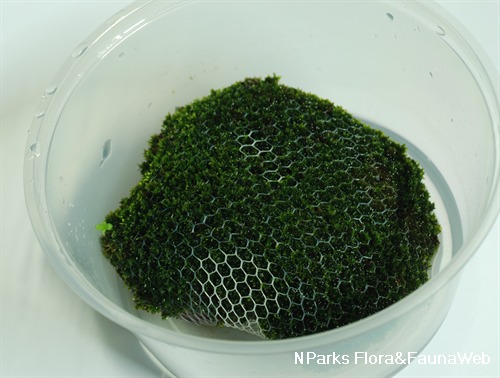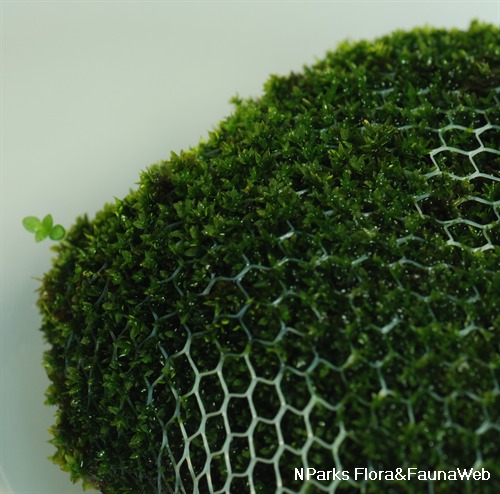
Back
Tortula ruralis (Hedw.) G. Gaertn., B. Mey. & Scherb.
| Family Name: | Pottiaceae |
| Synonyms: | Syntrichia ruralis (Hedw.) Web.&Mohr, Tortula intermedia (Brid.) De Not., Tortula ruraliformis (Besch.) Ingh. |
| Common Name: | Star Moss, Cement Moss |
Name
Classifications and Characteristics
| Plant Division | Mosses & Allies (Non-Vascular Plants) (Moss) |
|---|---|
| Plant Growth Form | Lithophyte |
| Mode of Nutrition | Autotrophic |
Biogeography
| Native Distribution | Cosmopolitan. |
|---|---|
| Native Habitat | Terrestrial |
| Local Conservation Status | Non-native (Horticultural / Cultivated Only) |
Description and Ethnobotany
| Growth Form | An erect and slow-growing xerophytic moss, it can survive for months without water and forms fairly loose to dense tufts. |
|---|---|
| Foliage | The small leaves are dark green and glisten when provided with adequate water. They leaves are arranged in rosettes. When dry, the leaves twist around the stem and turn red-brown. |
| Flowers | It is a moss and does not produce flowers. |
| Fruit | It is a moss and does not produce fruits. |
| Cultivation | Though it is sold in aquariums in Singapore, it is not a true aquatic moss and cannot be grown fully submerged. Doing so would cause the moss to rot within a few months. It is ideally grown partially submerged in water though it is highly drought tolerant and can revive after being dried out thoroughly (dessication). |
| Etymology | The common name 'Star Moss' is derived from the the leaf arrangement which gives the the appearance of stars hence its name. |
Landscaping Features
| Desirable Plant Features | Ornamental Foliage, Ornamental Form |
|---|---|
| Landscape Uses | Terrarium |
Plant Care and Propagation
| Light Preference | Full Sun, Semi-Shade, Full Shade |
|---|---|
| Water Preference | Moderate Water, Little Water |
| Rootzone Tolerance | Drought Tolerant |
| Maintenance Requirements | Low |
| Propagation Method | Division |
| Propagation Method Remarks | The plant can be propagated by separating it into several clumps and tying each clump onto a rock and tying in down with fishing line or mesh. |
Image Repository
Others
| Master ID | 31495 |
|---|---|
| Species ID | 5892 |
| Flora Disclaimer | The information in this website has been compiled from reliable sources, such as reference works on medicinal plants. It is not a substitute for medical advice or treatment and NParks does not purport to provide any medical advice. Readers should always consult his/her physician before using or consuming a plant for medicinal purposes. |

